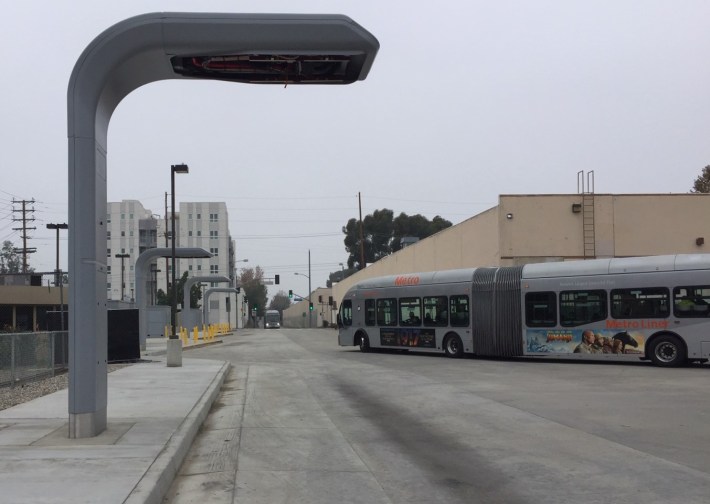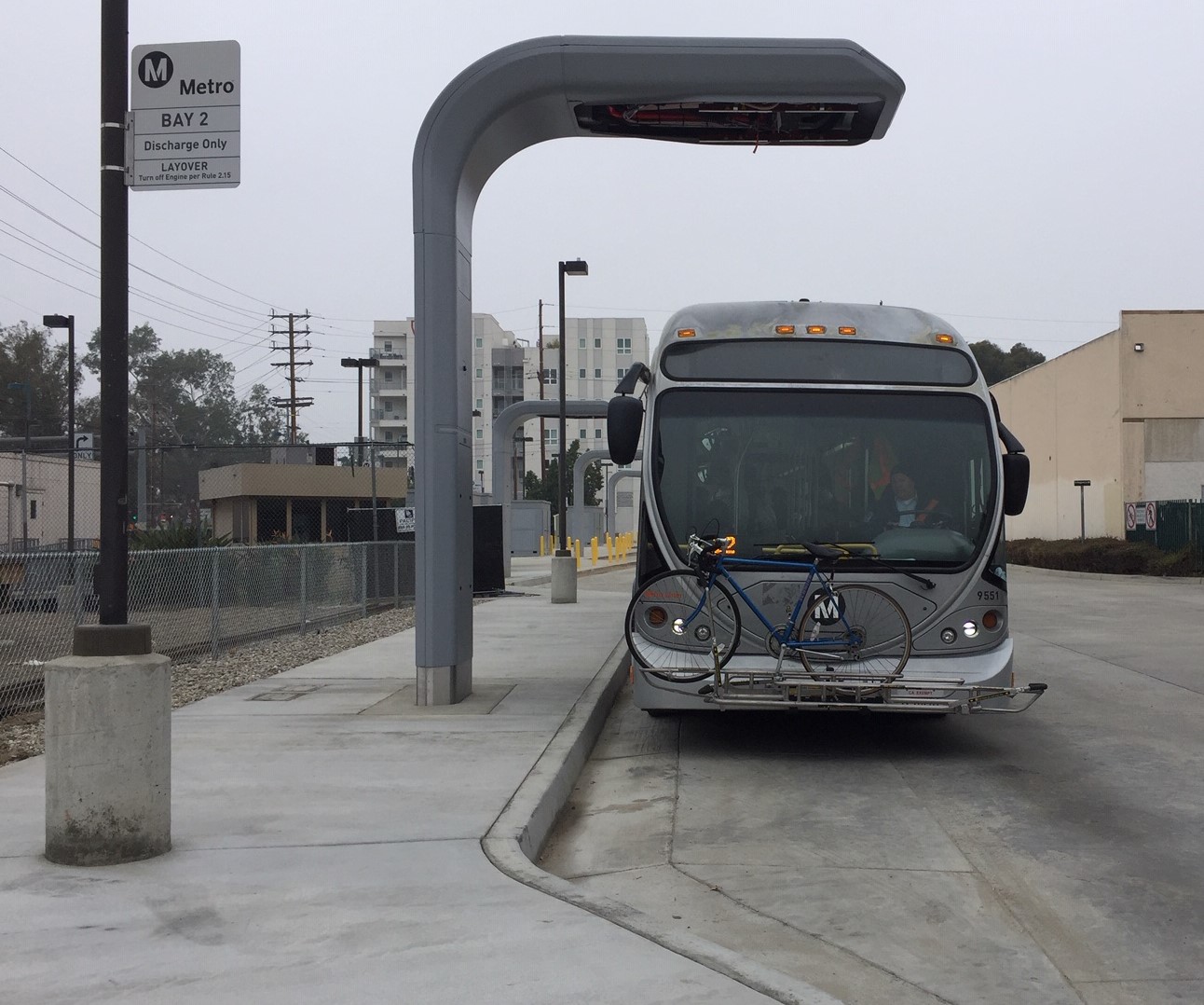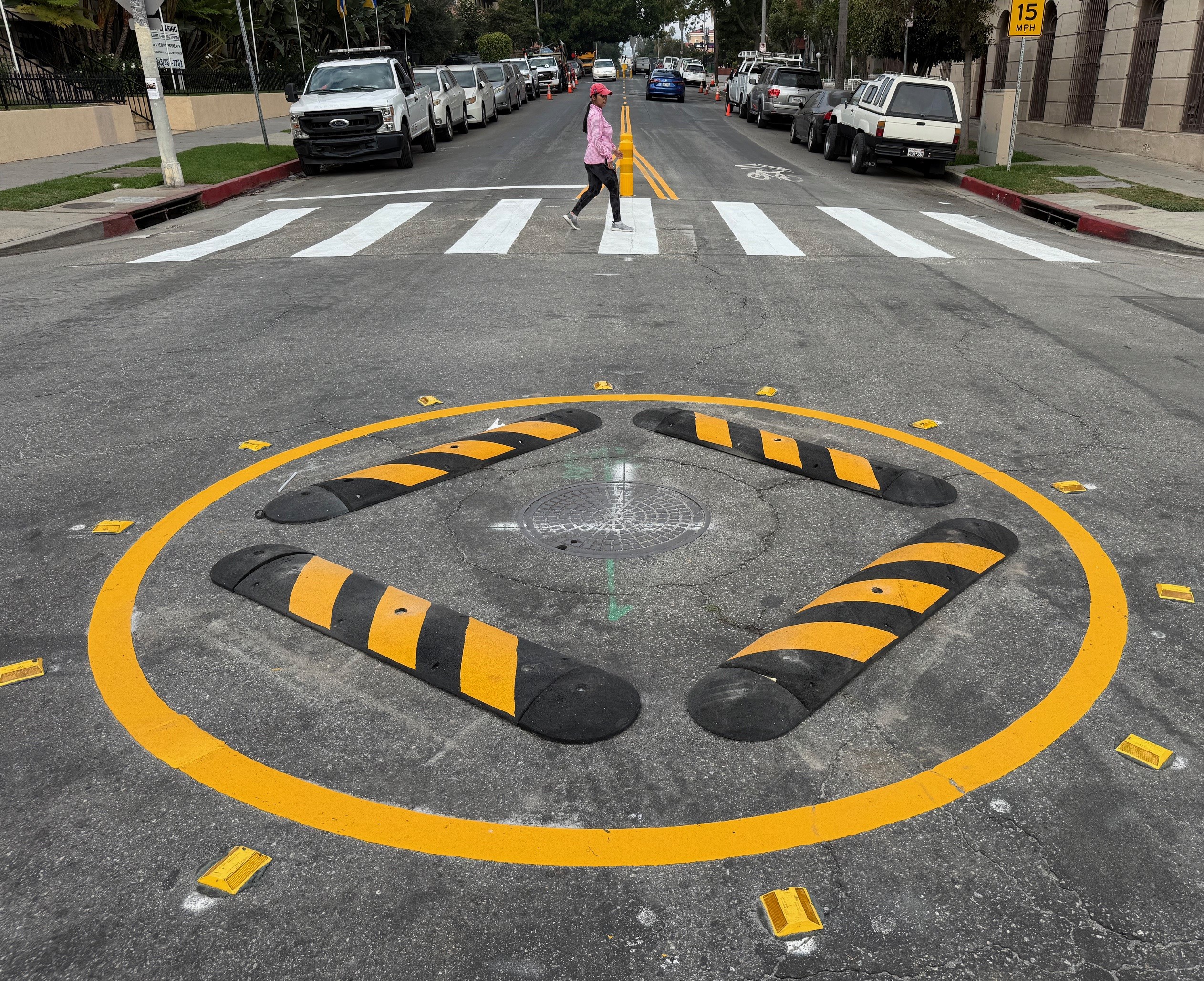Yesterday the Metro G (Orange) Line returned to its usual North Hollywood station pick-up and drop-spots, as construction of electric bus chargers has been more-or-less completed. The construction closure was originally announced to last from July 28 through late October 2019, but was extended through last weekend - January 26, 2020. Construction impacts on G Line riders has been minimal as the bus rapid transit line shifted to nearby streets for a very short distance.
By the end of this fiscal year - late June 2020 - Metro plans to operate the G Line with fully electric buses.
The G Line will be Metro's first electric bus line, serving as a proving ground for the agency's transition to full bus fleet electrification by 2030.
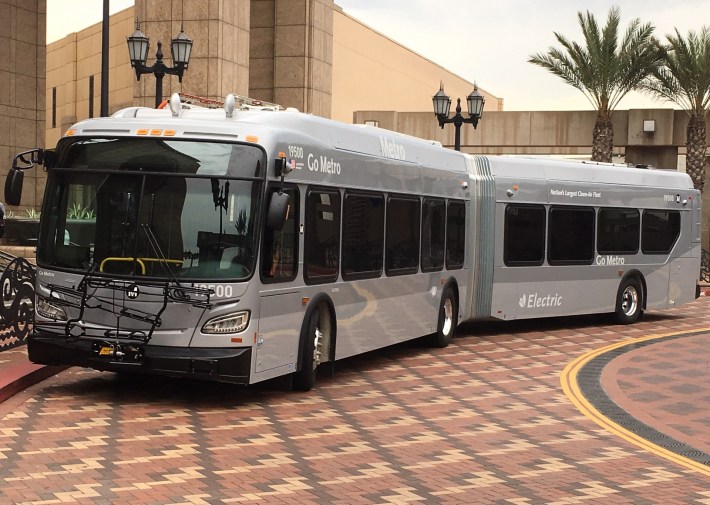
Metro will run all-electric 60-foot articulated New Flyer buses on the G Line. The Metro board approved purchase of 65 New Flyer electric buses in 2017. New Flyer states that these buses have a range of 230 miles. In July 2019, Metro took delivery of its initial electric New Flyer bus. Per this Metro presentation, the battery-electric buses will be charged at two chargers at the Chatsworth bus yard, plus eight chargers along the 18-mile G Line route: four at the North Hollywood station, two at the Chatsworth Station terminus, and two at the Canoga Station. G Line bus operations will include a 7-10 minute layover each hour - for in-route charging, which adds ~40 miles of additional range per charge.
Per Metro's post at The Source, charger construction continues at Canoga Station, and will soon begin at Chatsworth Station.
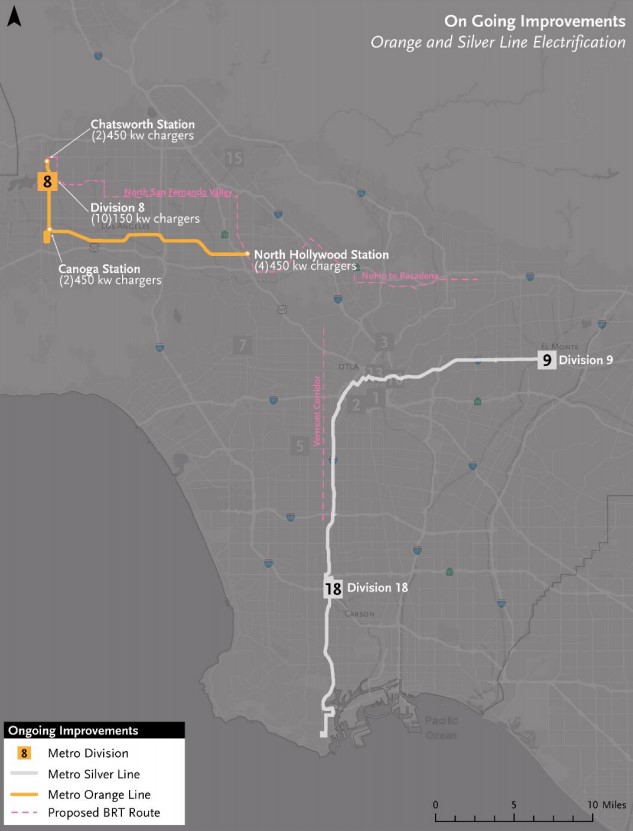
Metro will also be electrifying its J (Silver) Line BRT in fiscal year 2020-21, utilizing 40-foot BYD battery-electric buses.
Metro estimates anticipate that full bus electrification will cost more than a billion dollars: $0.7-1.0 billion for charging infrastructure, plus another $400 million for the buses. Earlier this month, Metro applied for state Transit and Intercity Rail Capital Program (TIRCP) funding for zero-emission buses and the charging infrastructure to support them. As of late 2019, Metro planned to request $104 million in TIRCP funding for a $210 million electrification initiative. The electrification project would include purchasing 220 battery-electric buses that would operate out of Metro divisions in El Monte and Gardena.
